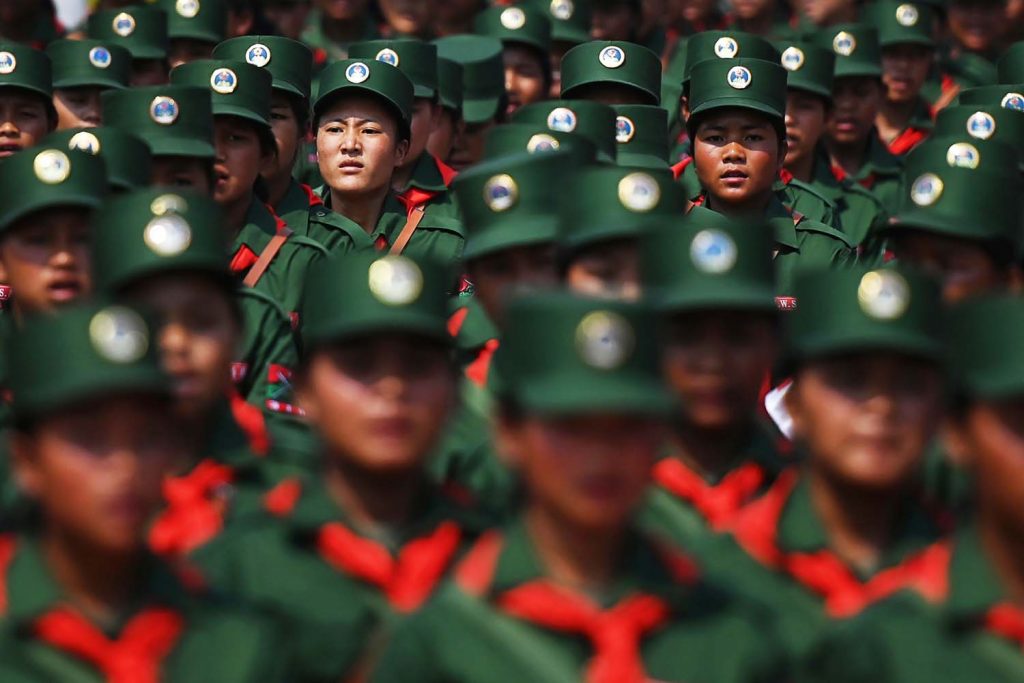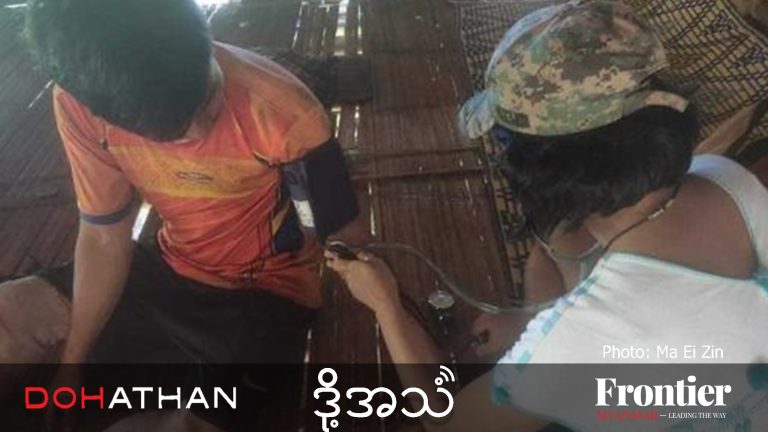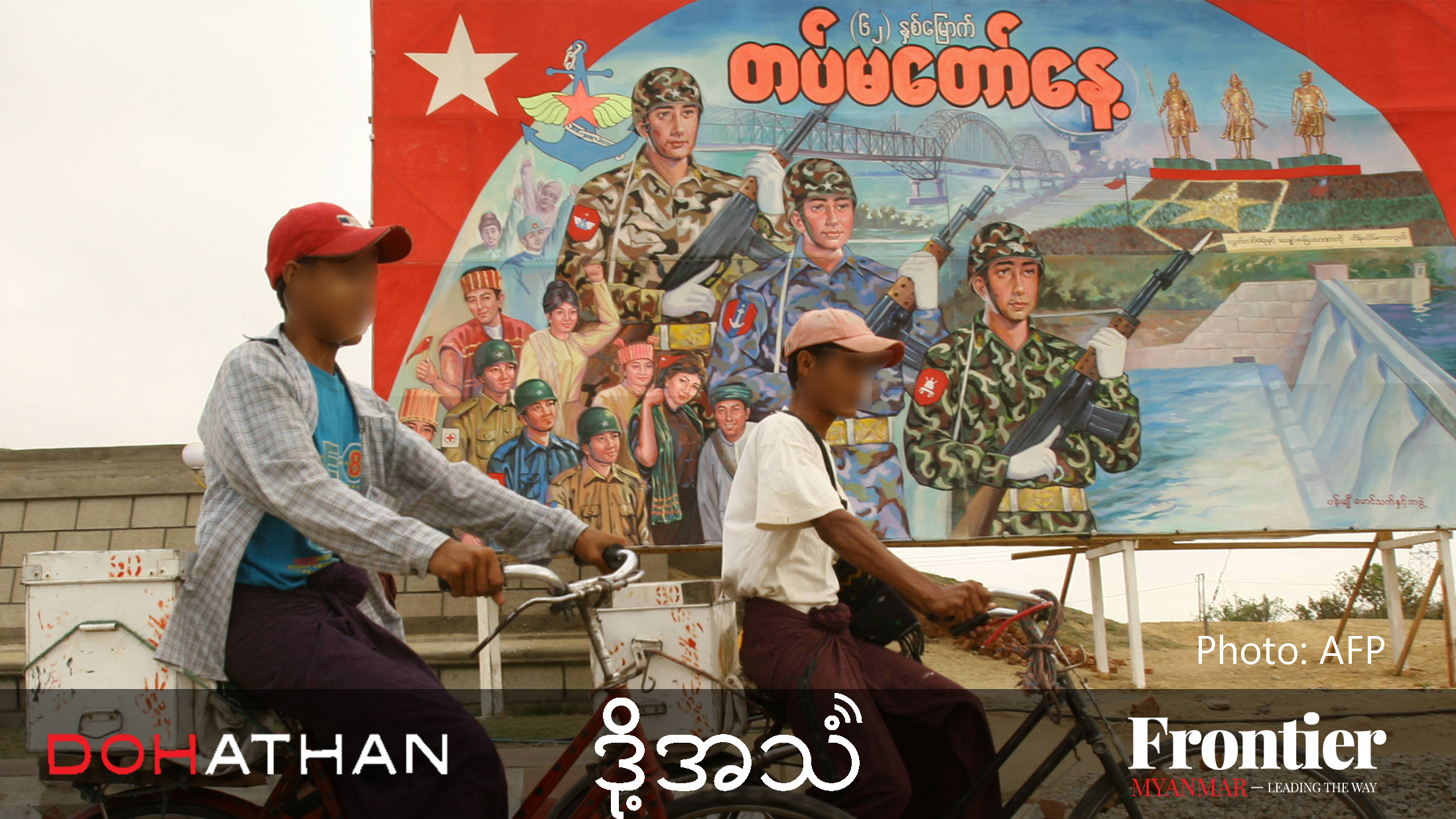The growing risks to Myanmar’s peace process from perpetually “frozen” conflicts means that new strategies and approaches are needed to overcome the deadlock in political negotiations.
By AUNG NAING OO | FRONTIER
A little over a year ago, I wrote that many of Myanmar’s armed conflicts were “frozen”. Looking back a year later, the conditions on the ground – in terms of fighting at least – have not changed much. In fact, there have been fewer clashes involving the groups that have signed various types of ceasefires.
In all likelihood, the frozen conflict scenario is here to stay and will have serious implications for the peace process in Myanmar.
Not all conflicts are frozen, however. Over the past year, groups without a ceasefire, including the Arakan Army and Ta’ang National Liberation Army, have clashed with the Tatmadaw. The fighting in Rakhine and southern Chin states is the fiercest in Myanmar’s recent history, and shows little sign of abating.
In August last year, the TNLA launched a surprised attack on the Defence Services Technological Academy in Mandalay Region. Judging from the patterns of TNLA offensives in recent years, it appears that major attacks will continue to occur once or twice a year – whenever it is operationally possible for the group – until and unless it is brought under a ceasefire.
But the areas where fighting has taken place – Rakhine and southern Chin states, and northern Shan State – are relatively small compared to the areas where ceasefires are mostly holding.
Overall there have been few clashes involving groups that have signed a bilateral ceasefire or the Nationwide Ceasefire Agreement.
Sources close to the Joint Ceasefire Monitoring Committee, which is responsible for monitoring NCA implementation with signatories, say that the number of clashes between the government and NCA signatories has declined since 2018, when there were 28. Only eight skirmishes were recorded in 2019. So far this year, only several clashes have been reported.
Although the JMC has been the subject of criticism, with some arguing it has not fulfilled its role, it is still important because it acts as a deterrent mechanism.
Invest in Frontier Myanmar’s independent journalism by becoming a member. Sign up here.
The arrival of COVID-19 has only served to further freeze most of Myanmar’s conflicts.
To combat the spread of the virus, the government formed a committee to coordinate with ethnic armed groups at the end of April. Although there have been small clashes with the Karen National Union over COVID-19 screening stations, the committee’s virtual meetings with ethnic leaders have helped to strengthen cooperation.
The Tatmadaw has delivered medical equipment to several ethnic armed groups as part of its COVID-19 response. In a surprise move, the Tatmadaw even provided medical supplies to the Kachin Independence Organisation, which is yet to sign a ceasefire since its earlier agreement collapsed in 2011.
At the same time, all sides are working to organise a 21st Century Panglong Union Peace Conference in August – the first since 2018. It is likely to strengthen the relationship among NCA signatories and help them avoid clashes.
Meanwhile, the government is also tentatively pursuing ceasefire negotiations with non-signatories, including the AA and TNLA. If they are able to reach an agreement, it will almost certainly freeze the conflicts rather than help to resolve them completely.
All of this may have short term benefits, by reducing the loss of life and property due to fighting and creating space for political negotiations. But there will also be serious implications in the long run.
Most ethnic armed groups have the resources and manpower to continue fighting, and the various types of ceasefire mean that the threat against them has been removed or diminished. If the political dialogue drags on or the solution does not seem attractive, they can continue negotiations but hold out on an agreement.
This is what is happening now. Although the KNU and the Restoration Council of Shan State have returned to formal talks, which is positive, political negotiations are making only modest progress.
Some of this is due to external factors. Understandably, the focus has been on the COVID-19 response. After the next Panglong meeting – assuming it goes ahead in August – attention will shift to the 2020 election, putting most peace talks on hold until at least early next year. This will contribute to a further freezing of the conflicts, particularly if the next government is slow to resume talks after being sworn in next March.
The frozen conflict scenario has many consequences, though. For instance, in terms of territorial control, unofficial demarcations with some of the large ethnic armed groups can become de facto over time. The prime example is the unofficial demarcation with the United Wa State Army three decades ago that has become almost official. Naturally, many groups hope to emulate the UWSA, including the Arakan Army, which is resulting in further conflict. Other serious issues could include security challenges associated with the conflict economy and illicit narcotics trade.
If the frozen conflict situation continues, it will complicate both political and security matters. It will likely make it harder for Myanmar to resolve critical issues such as disarmament and security reintegration. In the long run, prolonged frozen conflicts without a political solution will encourage some of the larger and more powerful ethnic armed groups to look at permanent alternatives – including, possibly, the much-feared option of secession.
There is still an opportunity to avoid this playing out, but it requires progress towards a genuine peace settlement. To achieve this, there has to be a serious rethink of many aspects of the peace process, and all sides need to come up with a set of viable strategies. At the end of the day, they need to put greater emphasis on political negotiations and find a political solution as soon as possible.







